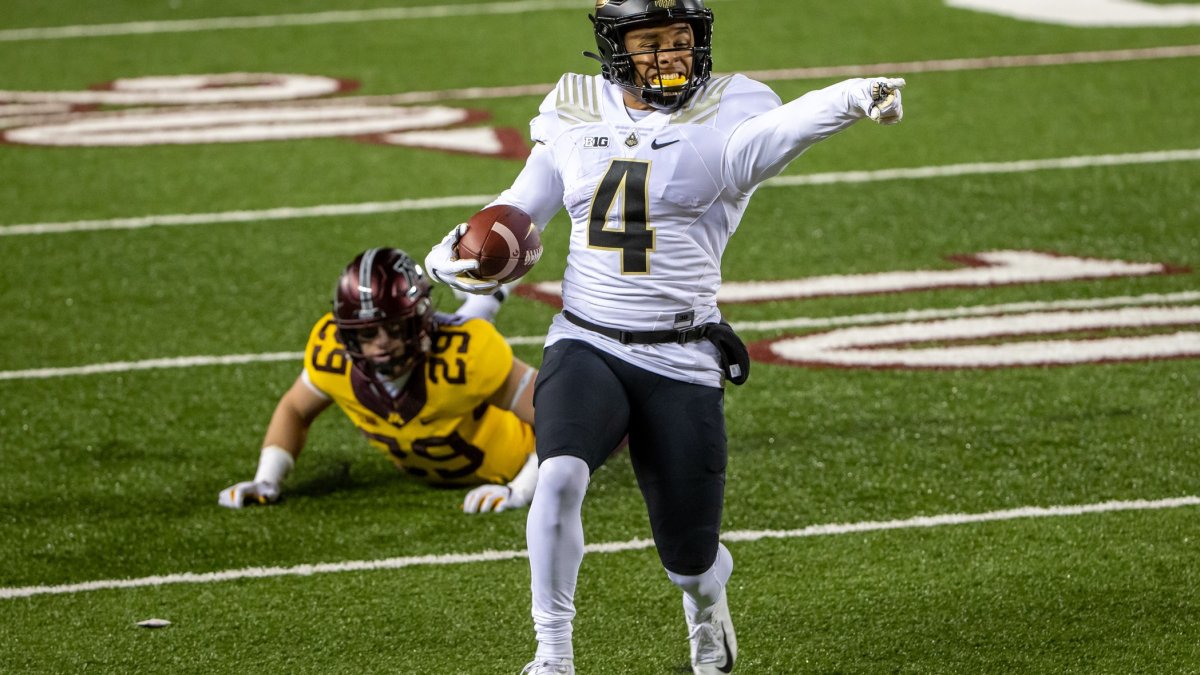Comparing current NFL draft prospects to those of years past is standard procedure in draft evaluation, though most comparisons are built on the memory recall and subjective opinion of the particular evaluator.
This will be the first in a series of articles comparing the 2021 draft prospects to prior years and picking out the most similar comps with a clearly delineated and quantifiable method.
PFF data scientist Eric Eager has done tremendous work building college-to-pro projections, which are built off the robust college data we’ve collected since 2014 and have been applied to exercises like building an “Analytics” Mock. In this analysis, I will use some of our advanced stats for comparison but primarily rely on traditional stats to go back further to compare the 2021 prospects to draft classes going back to 2006.
Without the NFL Scouting Combine this season, the important measurables like weight and 40-yard dash will be reported through the various pro days that will be taking place over the next few weeks.
METHODOLOGY
The comps below were derived from a two-step process. First, I converted all the most statistically relevant stats and measurables to percentiles based on the thousands of prospects who have entered the NFL since 2006 at each position. Then, I filtered the total universe of past prospects by those who had draft positions, weight and 40 times within a 10th percentile in either direction of Rondale Moore. For undrafted players, I assigned a numerical draft position of 300.
The rest of the matching features were transformed by principal component analysis (PCA). I found the closest statistically comparable players by the euclidean distance between the players' principle components, listed in the top 10 below.
The metrics for PCA are career market shares for receiving yards and receiving touchdowns, best-season market shares for receiving yards and touchdowns, yards per route run and yards per reception.
For Moore's draft position, I’m using an estimate based on the mock data collected at GrindingTheMocks.com. For the weight and 40 time, I’m using the numbers from his pro day, with a 0.03-second penalty added to the 40 time to reflect the uncertainty of pro-day timed measurements.
Most comparable players
Moore dazzled during the Purdue pro day, running a 4.29-second 40-yard dash (98th percentile) and recording a 42.5-inch vertical jump (99th). Athleticism is less important for projecting wide receiver success, but it can significantly impact draft position.
Moore’s official height, 5-foot-7, attracted attention because it came in a couple of inches shorter than his previously listed height, making some wonder if he’s too short to be considered a wide receiver at the next level.
NFL scout at Purdue pro-day just texted that WR Rondale Moore measured 5070, not 5077 as previously reported. Still a dynamic playmaker. With this gross height deficiency many NFL teams might now be projecting him into more of sub-downs RB role than when they thought he was 5’9”.
— Jim Nagy (@JimNagy_SB) March 23, 2021

Moore hits all the market-share production marks for wide receiver prospects, but he generated his production in a unique way. He saw the third-lowest average depth of target (3.7 yards) of any wide receiver who ran more than 100 routes in 2020. Even using only traditional stats, his 11 yards per reception is low for a top prospect, and his per-route efficiency will be capped if he can’t extend his route tree further downfield in the NFL.
There are some examples of Moore catching the ball down the field, but they are few and far between.
Exclusive content for premium subscribers

WANT TO KEEP READING?
Dominate Fantasy Football & Betting with AI-Powered Data & Tools Trusted By All 32 Teams
Already have a subscription? Log in



 © 2025 PFF - all rights reserved.
© 2025 PFF - all rights reserved.